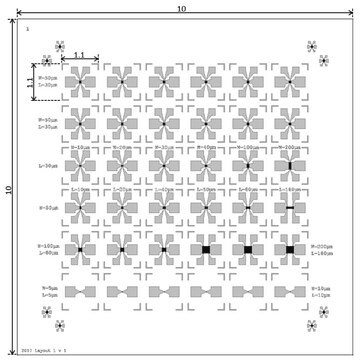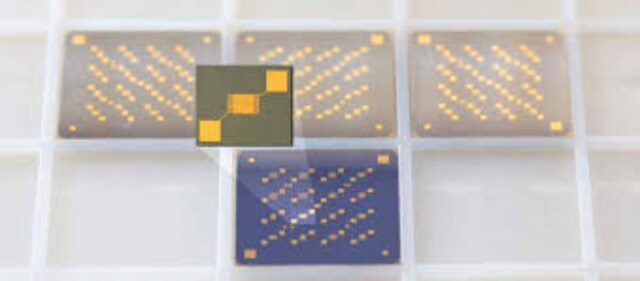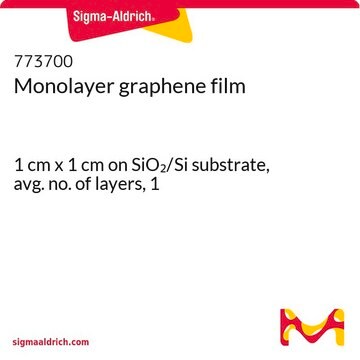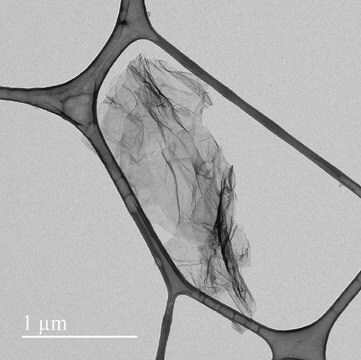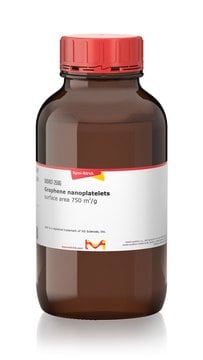Kluczowe dokumenty
GRFETS20
Graphene FET chip
S20
Synonim(y):
2-probe FET device, 2-probe Graphene FET sensor, Chemical gated Graphene FET, GFET S20, Graphene field effect transistor chip S20
About This Item
Polecane produkty
opis
Absolute Maximum Ratings
Maximum gate-source voltage: ± 50 V
Maximum temperature rating: 150 °C
Maximum drain-source current density: 107 A/cm2
Chip dimensions: 10 mm x 10 mm
Chip thickness: 675 μm
Dirac point: < 50 V
Yield >75%
Encapsulation: 50 nm Al2O3 + 100 nm Si3N4
Gate oxide materials: 90 nm SiO2
Graphene field-effect mobility: >1000 cm2/V·s
Monolayer CVD grown Graphene based 2-probe field effect transistors (FET).
Number of devices per chip: 12
Resistivity of substrate: 1-10 Ω·cm
Metallization: Chromium/Gold-Palladium 2/50 nm
Szukasz podobnych produktów? Odwiedź Przewodnik dotyczący porównywania produktów
Opis ogólny
The graphene FET-S20 chip is designed for measurements in liquid medium. This chip provides 12 graphene devices, with encapsulation on the metal pads to avoid degradation and reduce leakage currents, and the probe pads located near the periphery of the chip. It also includes a non-encapsulated electrode at the center of the chip, which allows liquid gating without the need of an external gate electrode.
Zastosowanie
- Bioelectronics
- FET based sensor research for active materials deposited on graphene
- Clinical applications
- Biosensors
Cechy i korzyści
- State-of-the-art GFETs utilizing consistently high-quality CVD monolayer graphene
- Metallic contacts and metal/graphene interface are encapsulated to avoid degradation and reduce leakage current in liquid environment
- Perfect platform device for new sensor research and development
- 12 individual GFETs per chip
- A central gate electrode
Kod klasy składowania
11 - Combustible Solids
Klasa zagrożenia wodnego (WGK)
nwg
Temperatura zapłonu (°F)
Not applicable
Temperatura zapłonu (°C)
Not applicable
Wybierz jedną z najnowszych wersji:
Certyfikaty analizy (CoA)
Przepraszamy, ale COA dla tego produktu nie jest aktualnie dostępny online.
Proszę o kontakt, jeśli potrzebna jest pomoc Obsługa Klienta
Masz już ten produkt?
Dokumenty związane z niedawno zakupionymi produktami zostały zamieszczone w Bibliotece dokumentów.
Produkty
Synthesis and Applications of Graphene Nanoribbons Synthesized
Nasz zespół naukowców ma doświadczenie we wszystkich obszarach badań, w tym w naukach przyrodniczych, materiałoznawstwie, syntezie chemicznej, chromatografii, analityce i wielu innych dziedzinach.
Skontaktuj się z zespołem ds. pomocy technicznej